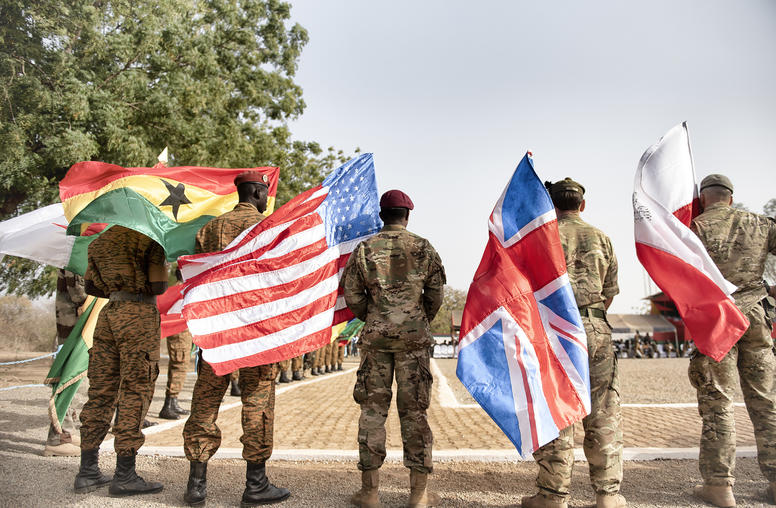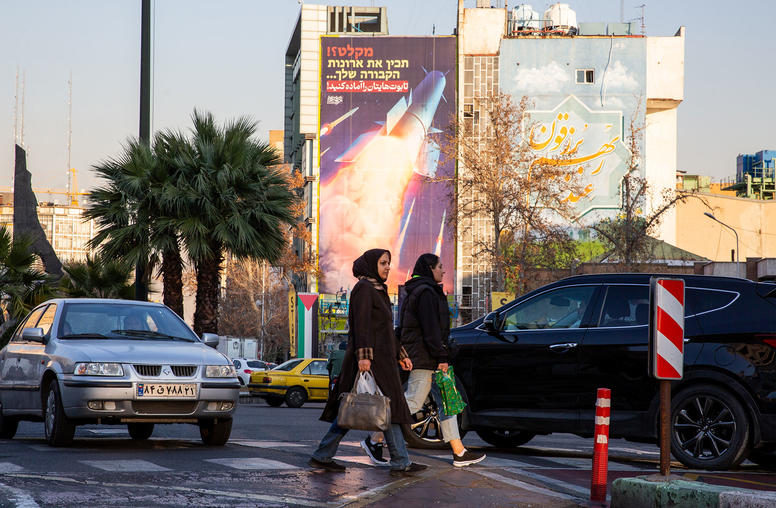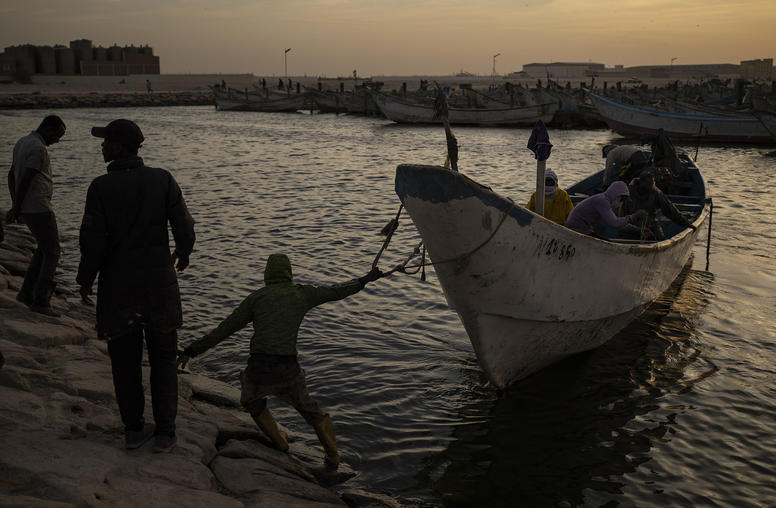How Not to Fight a Fanatic
The United States needs to take a wider view of whom it works with in its war against religious extremists.
This week, against the backdrop of another round of beheadings by the Islamic State, this time in Libya, experts and policymakers from around the world are gathering in Washington, D.C., to discuss how to counter the rise of violent extremist movements. The summit — which is being held at the behest of U.S. President Barack Obama and convened by the joint efforts of the White House and the Department of State — is designed to focus on effective “community engagement, religious leader engagement, and the role of the private sector and tech community” in preventing violent extremism.
That religious leader engagement is leading the summit agenda is not surprising, but it is encouraging. Many of the violent movements in the world, after all, are framed in religious terms, and so faith leaders are crucial to challenging the narratives of these hostile movements. Though there have been marked improvements in recent years — the State Department founded its Office of Faith-Based Community Initiatives in 2013, for example — religious engagement overseas has long been marginal in U.S. diplomacy and security. But in order to truly uproot violent extremism, working with religious leaders must go beyond the superficial and narrow strategy of using only male Islamic clerics for counter-messaging that has dominated past efforts.
As the U.S. government pursues religious engagement in its effort to prevent and counter violent extremism, it must avoid policies that have yielded limited impacts, had unintended negative consequences, or even backfired. Moving forward, U.S. policymakers and those who implement programs on the ground would do well to bear in mind three particular lessons: They need to expand their focus beyond Islam, men, and counter-messaging.
These lessons, expanded upon below, are gleaned from more than two decades of engagement by the U.S. Institute of Peace (which I work for) with the religious sector in war zones and other fragile environments to prevent and resolve violent conflict, most recently in countries like Nigeria, Myanmar, Libya, and Iraq, where violent extremism is on the rise.
Not just Islam
The most organized and high-profile extremist movements right now are those that tout Islamic roots. This includes the so-called Islamic State (IS, also commonly referred to as ISIS) that has overrun parts of Iraq and Syria, and Boko Haram in Nigeria. But despite the religious overtones, the causes of the rise of these movements within the Muslim world have more to do with political, economic, and historical developments than with Islam itself. As Obama acknowledged in his recent speech at the National Prayer Breakfast, all religions, including Christianity, have been manipulated throughout history to justify violent campaigns.
In Sri Lanka and Myanmar, Buddhist nationalist movements target native Muslims. These movements have driven violent campaigns against Muslims, and they cite Buddhist teachings about the need to defend that tradition. In Nigeria, Christian militant movements have operated for decades and are now gathering steam in response to growing instability; Christian militia groups operating in the Central African Republic have been accused of massacring thousands of Muslims. In the United States and Europe, where hate crimes are on the rise, groups like the Ku Klux Klan have long couched their extremist agendas in Christian terms.
Extremism is fueling violence around the world, across all regions and religious traditions, often cyclically. Any strategy by the United States that singles out Islam will not only be myopic, failing to see the interconnectedness of these dynamics and movements, but will fuel the recruitment narratives of Islamic extremist groups that accuse the United States of being at war against Islam.
Not just men
Policymakers and those who are implementing programs on the ground around the world to engage faith communities in countering violence and extremism tend to rely almost exclusively on male clerics (a state of affairs confirmed by a recent multiyear study of gender dynamics and the consequences of religious peacebuilding efforts, which I co-led). But using this simplistic notion of how religious communities operate has had serious unintended consequences: It sets back the cause of United Nations Security Council Resolution (UNSCR) 1325, which calls for the equal participation of women in peacemaking and peace building, and has marginalized others who play vital roles in shaping religious communities. But religious outreach doesn’t have to come at the expense of UNSCR 1325 — and in fact shouldn’t.
Religion is undeniably one of the most male-dominated sectors in the world; it is primarily men who hold positions of formal religious institutional authority. In many (if not most) traditions, ordained clerics, those recognized as authoritative interpreters of the tradition, are exclusively men.
But in every tradition, across the world, women hold positions of religious authority, even if informally, and so shape their traditions in meaningful ways. And this is not just a trend in Western cultures. What comes to mind first may be Catholic or Buddhist nuns, Protestant female priests and pastors, or female Jewish rabbis, but this is just the start. In the Muslim world, there are female imams (imama in Arabic or referred to as moulavia or aleemat in Asia), and female religious judges and scholars issuefatwas or religious legal pronouncements. Women have pursued advanced degrees in religious education and are influential scholars in all traditions. Some women serve as leaders in religious institutions (for example the head of the Catholic Bishops’ Conference in the Democratic Republic of the Congo, Sister Marie Bernard Alima, is a woman), and as heads of faith-based organizations and the social service arms of their faith communities.
At the community level, women are powerful in shaping the faith-based responses of families and communities to situations of injustice and violence. In fact, studies by the Pew Research Center have shown that women throughout the world tend to describe religion as more important than men do, and to participate in higher numbers in religious activities.
To engage only male religious leaders, therefore, is to engage only part of the leadership — a slice of influence within any faith. As a result, such an effort will be hamstrung and have limited impact. Not only that, to engage only male clerics sets back the cause of gender equality, a cause that is already seriously threatened by the rise of violent extremist movements that often seek to control women’s bodies and curb their power. Further marginalizing and silencing women, including religious women, is the last thing the United States should be looking to do.
Religious leader engagement should be balanced by gender, seeking to further promote women as authorities and leaders in their own right within the religious realm. These women are often motivated and affirmed by teachings supporting women’s dignity and equality within their faith traditions. Engaging them, therefore, can create a virtuous cycle — simultaneously countering religious messages of extremist groups used to degrade and oppress women.
Not just counter-messaging
To date, U.S. policies that involve working with religious leaders in order to prevent and counter violent extremism have focused on clerics’ ability to issue messages that challenge the religious appeals of extremist groups. Such religious statements and fatwas are undoubtedly important. But if the United States views religious figures simply as vehicles for moderate messaging, the effect of its religious engagement efforts will be limited, failing to acknowledge and leverage religious actors’ full capacity to build sustainable peace. Moreover, such a narrow policy is, frankly, offensive to religious leaders overseas.
A more effective strategy must take into account how people of faith are in strong positions within their communities to address the underlying drivers of radicalization and violence, including political corruption, economic factors such as unemployment and inequality, trauma, and hopelessness, in addition to ideological ones. Besides conceiving and amplifying “correct” religious interpretations and promoting tolerance and peace through religious education, religious actors with whom I work are also tackling psychological issues in their communities. They are creating training programs for youth to help them find employment and affirmation for how they can contribute constructively in their communities. They are using religious institutions and organizations to address community needs, and are putting pressure on authorities to address decades of corruption in governance that fuels political grievances.
Many community faith leaders — male and female, Muslim and non-Muslim — are already engaged in such activities to craft a more holistic approach to building peace. If the United States only turns to religious leaders to issue counter-messages but fails to support their longer-term projects and priorities, these leaders may lose the motivation to cooperate with the international community’s efforts.
The United States has a chance to make its work with religious leaders smarter, more effective, and wider-ranging. But without taking these lessons into account, U.S. efforts to engage religious figures in the fight against violent extremism are at serious risk of backfiring — provoking resentment, further marginalizing women, and fueling the anti-Western recruitment narratives of many violent extremist groups. Responding to this serious global threat swiftly should not come at the expense of doing so strategically, thoughtfully, and with an eye on the long game.
Reposted with permission from ForeignPolicy.com, Source: “How Not to Fight a Fanatic"



